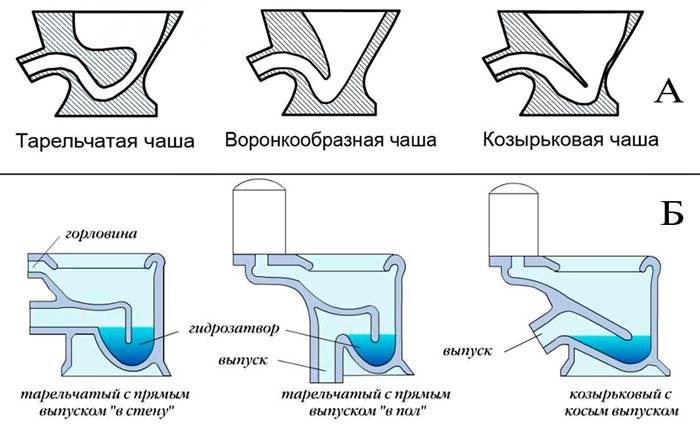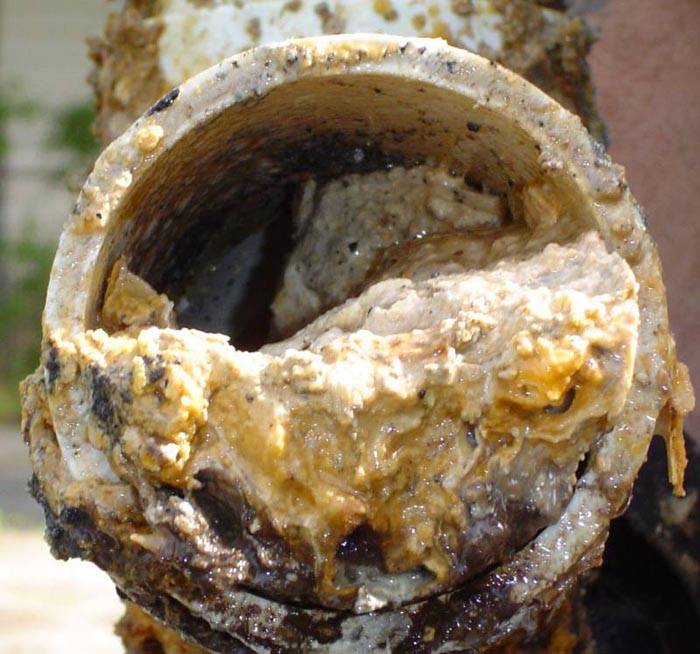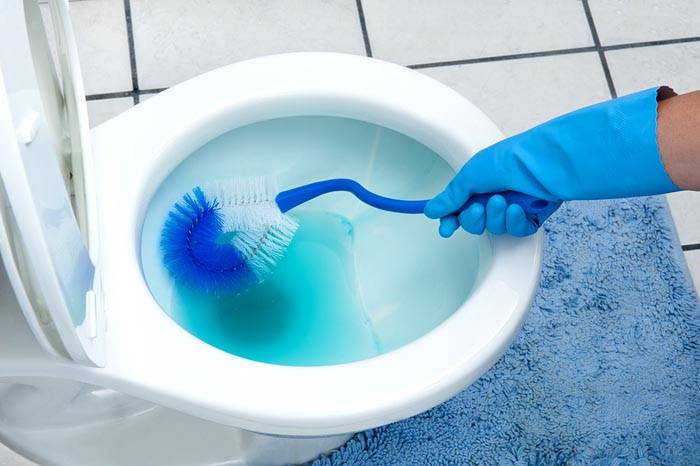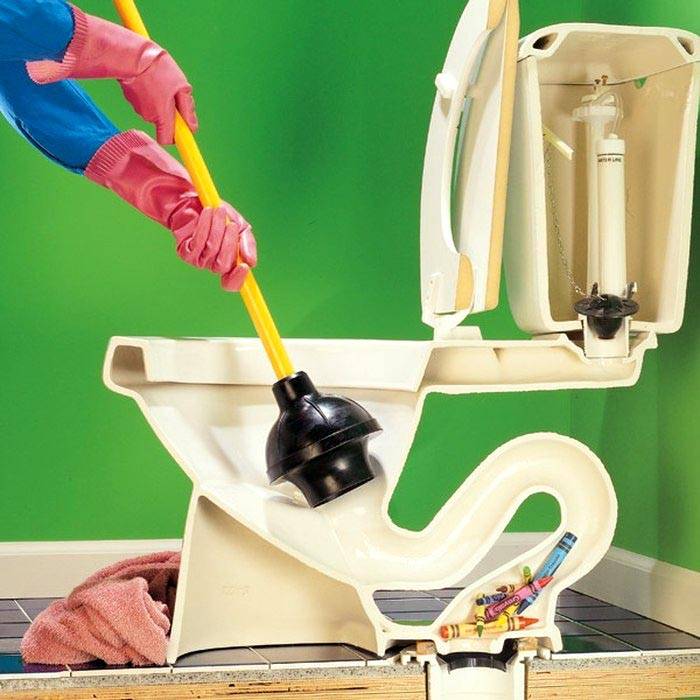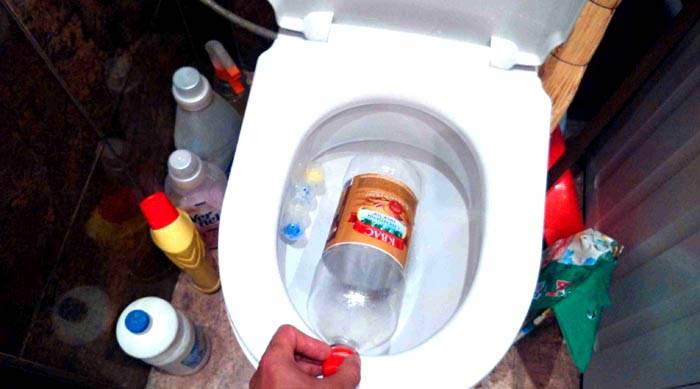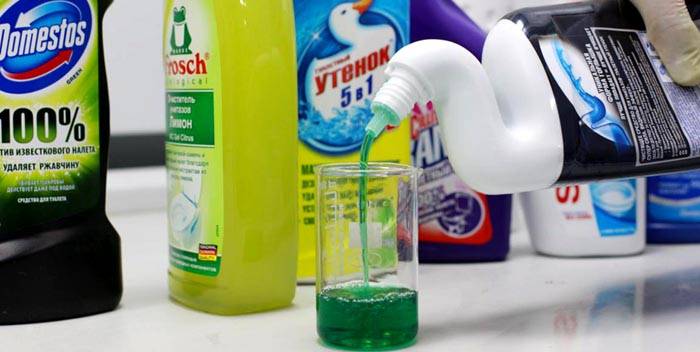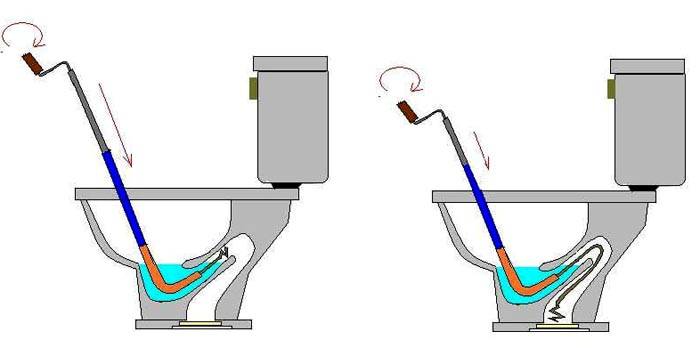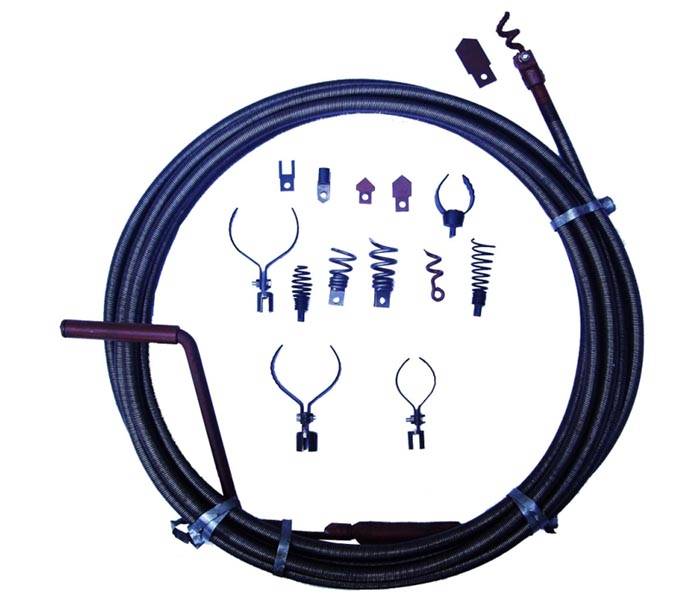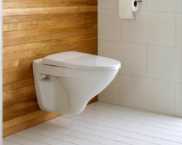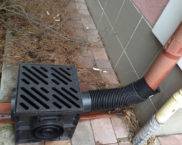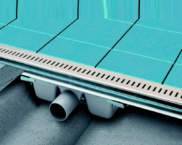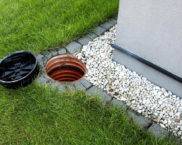What to do if the toilet is clogged: how to clean the drain yourself using improvised and professional tools
Normal functioning sewerage systems needed around the clock. But such emergencies occur unexpectedly. It is not always possible to quickly arrange a plumber's visit. In any case, contacting specialists will be associated with certain costs. However, you can quickly fix the problem if the toilet is clogged. How to clean the drain yourself is detailed in this article. In addition to various instructions and methods, data on effective preventive measures are provided here.
The content of the article
The design of the engineering system and features of pollution
All toilets are floor-supported and pendant models, are connected to the central riser through a special section of the pipeline. It forms a hydraulic seal that freely allows drains into the sewage system, but prevents the return of unpleasant odors. Its complex shape can become an obstacle to the movement of large and solid objects.
It is clear that when using the "in the floor" option, a high-quality drain is the easiest to provide. If a horizontal type outlet is used, the distance to the vertical section should be minimized, or the necessary slope should be created further.
With an incorrectly installed system and errors during use, pollution of a different nature can accumulate inside. The most difficult ones are calcium salts. They are formed when the water hardness is high. It is difficult to remove them mechanically due to the sufficiently high strength of the blockage. The use of strong chemicals (acids) can also damage pipeline components.
The next group of problems is explained by the violation of operating rules. These engineering systems are created using large diameter pipes. However, they can also be clogged with porous volumetric cat litter, baby diapers, and other foreign objects. In the most difficult situations, none of the cleaning methods will be effective. It is much wiser to eliminate this type of problem than to deal with the unpleasant consequences.
The information provided allows you to draw preliminary conclusions about useful preventive measures:
- When choosing plumbing and during installation, you should pay attention to the free passage of drains. The course in question shouldn't be too difficult. Be sure to comply with the standards for the distance to the central vertical pipe and the slope towards it.
- If old pipes are being replaced, it is best not to reduce the diameter. Corresponding changes are made only after careful calculation, consultation with competent specialists.
- During operation, foreign objects must not be thrown into the toilet. This rule is easier to follow than to break through a blockage in the toilet at a great distance from the drain hole.
- The regular use of special products for cleaning the inner walls of the sewer pipes will come in handy.
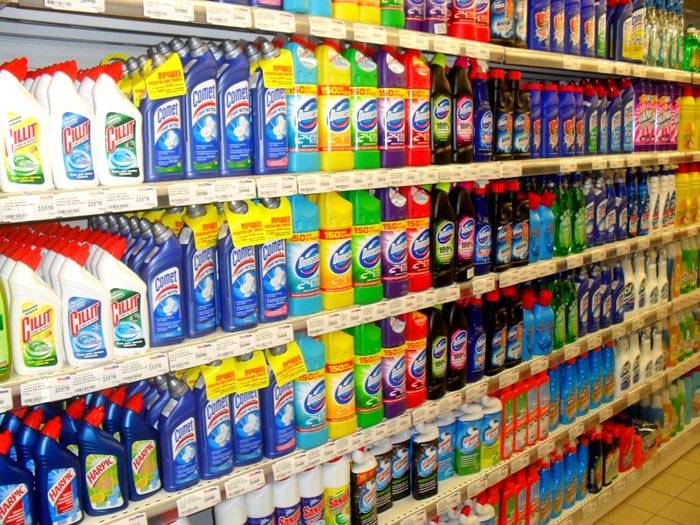
In a specialized store, it is not difficult to find a suitable preparation for rust, calcium and biological contamination. Its regular use will help maintain the ideal condition of the pipe walls and prevent blockages.
Note! It is recommended that you always cover the toilet bowl with a lid during repair work so that construction debris does not get into it.
The toilet is clogged: how to clean the drain yourself using different methods
Different methods have been discussed above. But sometimes problems arise for constructive reasons. They cannot be eliminated by preventive measures before major repairs. In any case, no hasty action is needed if the water does not drain out of the toilet. What to do is described below, but do not try to immediately apply a full drain. In some cisterns more than 3 liters of water accumulates, so you can fill the entire floor with sewage with such manipulations. To eliminate additional troubles, turn off the feed valve. To check the effectiveness of the system, single doses of liquid no more than 1-1.5 liters will be used.
Note! The simplest additional diagnostics is checking the flow from shells, shower, other connected plumbing fixtures. If it does not function, then the blockage is in the common pipe. It will not work to solve such a problem on your own in a multi-storey building, so you have to call specialists.
What can be used if there is no toilet plunger
It should be carefully removed to the outside. If rubber gloves of suitable length are not available, use regular plastic bags.
Such a product is inexpensive, takes up little space, and is not difficult to use. These arguments are enough to purchase a plunger. Choose a model with a suitable flexible part diameter. It should be 1-2 cm larger than the drain hole.
It is created from ordinary plastic containers of appropriate sizes (1.5-2 liters). The bottom is cut off exactly. The lid is tightened tightly. The tool is inserted into the drain hole, several sudden movements are made inward and outward. Interestingly, some professionals successfully use this tool for cleaning toilets from blockages.With the appropriate skills, it can generate even more hydraulic pressure than a standard plunger.
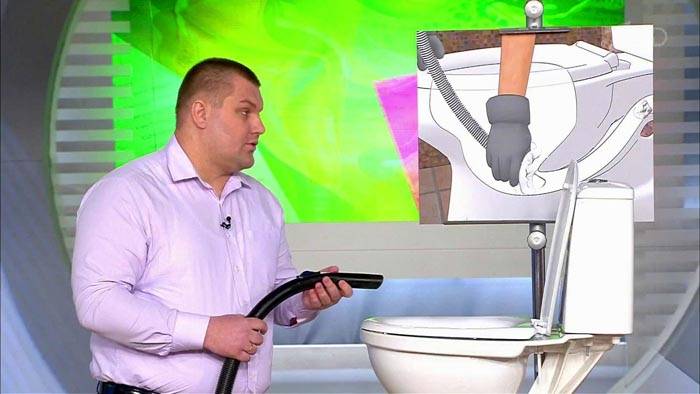
A flexible plastic or rubber hose is a suitable tool if the toilet is clogged. How to clean the drain on their own using this device is described below.
Such a product will not damage plumbing and pipes. But with the help of this device, you can penetrate 1.5-2 meters into the drain system. If the riser is located nearby, this will be enough. The hose is rotated to facilitate passage through the kinks. It is convenient to work with household gloves. With their help, a secure grip is ensured, protection of hands from dirt and scratches. During the procedure, water is added so as not to miss the moment of removing blockages.
The next improvised device is a small bag tied to a string (1.5-2 m). It is filled with sand, but not nuts or stones, so as not to damage the ceramics. The "striker" device is lowered into the drain area while holding the other end of the string in your hand. After draining the water, you can try to destroy the not too strong blockage at a sufficiently large distance. The used product is taken out, thrown into the trash can.
The toilet is clogged: how to clean the system at home with the help of improvised and special chemical compounds
The study of their effectiveness should be dealt with separately. It can only be noted that such drugs are often tested. Research results are not difficult to find on forums and thematic sites on the Internet. When using such products, follow the rules of the official instructions. They indicate the maximum processing time, temperature and other additional conditions.
Note! Some particularly aggressive chemicals should be used with caution. They can damage the polymer and metal components of the sewer. When they evaporate, they significantly degrade the composition of the atmosphere. In some cases, intensive ventilation is required.
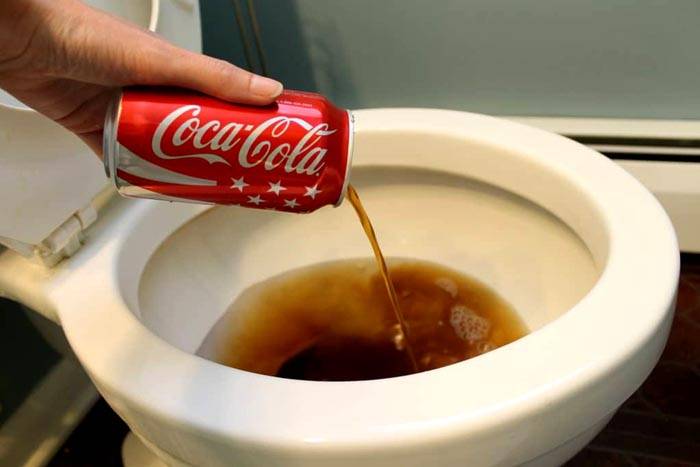
The negligible acid content in carbonated drinks is not capable of destroying even relatively weak pollution
There is actually an effective technique. It is used if the toilet is clogged, there are no special chemicals "at hand". What to do at home is described in the following step-by-step instructions:
- Take 250-300 g of sodium bicarbonate. Don't be intimidated by the difficulties - this is regular baking soda. For this procedure, 1 / 2-3 / 4 of a standard pack is enough. The required portion is poured into the drain hole in one dose. Push the powder deeper with a plastic brush.
- Immediately after that, pour 250-300 ml of table vinegar into the toilet bowl (standard concentration - 9%).
- These substances activate an alkaline chemical reaction. Under its influence, not only fats are decomposed, but even calcium deposits. The duration of the operation is 15 to 25 minutes.
Upon completion, 2-3 liters of boiling water are poured into the drain, or washed with hot water. The second method is preferable if polymer pipes are installed.
Important! Standard PVC pipes for sewage, depending on the modification, are designed for operating temperatures from + 40 ° C to + 60 ° C. Similar restrictions should be considered in relation to corrugated connectors that are used to connect toilets to the sewer system.
How to clear a blockage in the toilet: professional technology
The principle of this technology is clear from the figure. When the hose rotates, you have to overcome the frictional forces between it and the walls of the plumbing system. In this embodiment, this problem is not, since the shell moves only in the longitudinal direction. Rotational movements inserted inside wire rope transferred to the working tool in the end part.
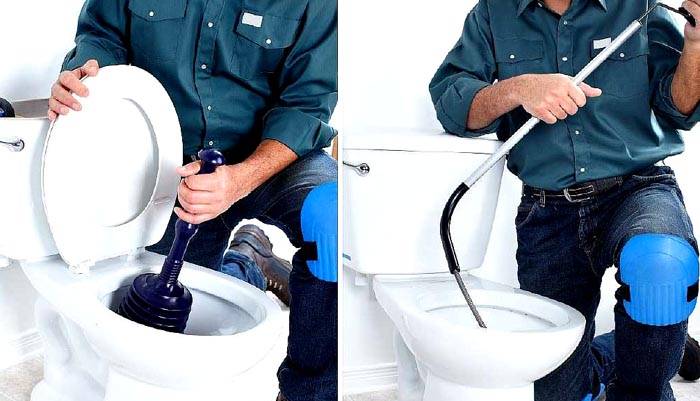
A flexible cable is useful for removing the most dense blockages when water hammering with a plunger does not help
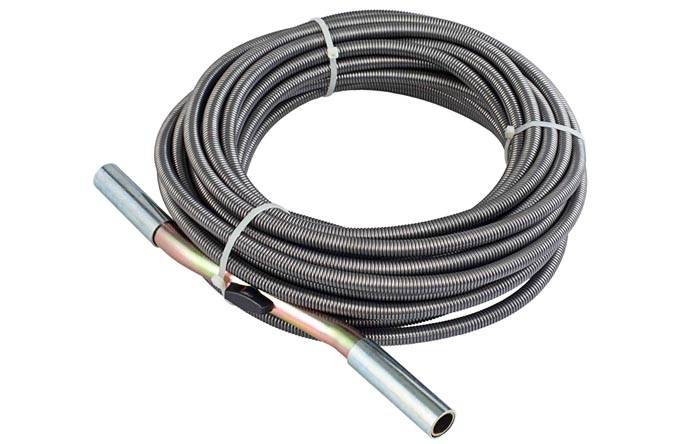
Specialized plumbing fixtures of this type are created with a length of more than 50 meters, a width of 0.05 to 1.5 cm
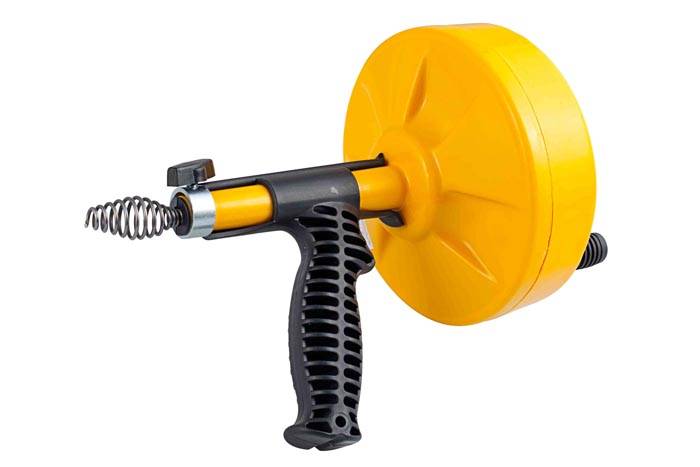
A modern model of a cable in a plastic case, with a comfortable grip. An electric motor is used to rotate the tools.
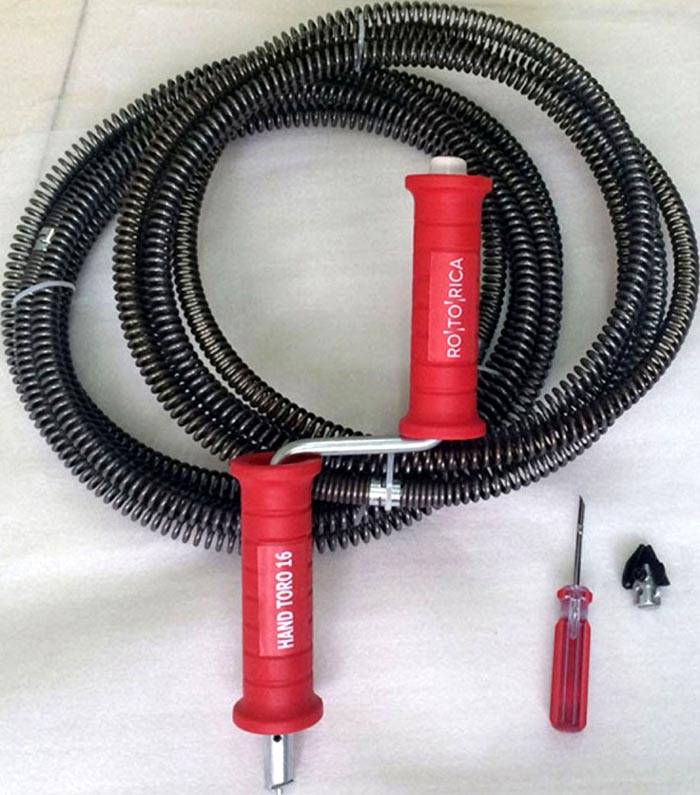
Such a product up to 2 m long with a manual drive is inexpensive. If blockages often form at home, you should consider purchasing a convenient professional device.
Additional tips and conclusions
Don't worry if your toilet gets clogged. With the help of the information presented, any person will figure out what to do. It is necessary to understand that improvised devices are rather suitable for unexpected emergencies. It is better to choose and purchase suitable effective means in advance. Chemical compounds are suitable for regular and preventive measures, as they have a limited shelf life.Mechanical devices do not pollute the environment. They are suitable for long-term use. Their use, subject to the simplest rules, will not damage the sewerage system and installed plumbing.
Video review: toHow to unclog a toilet bowl with a bottle






